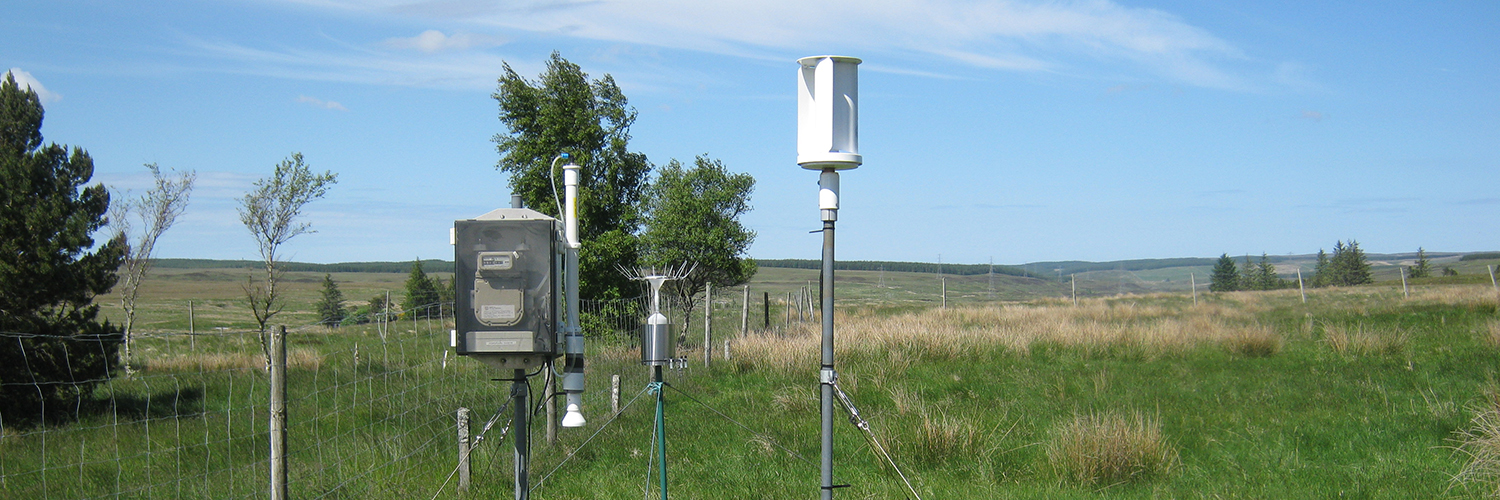A recently published assessment of data from the UK National Ammonia Monitoring Network has revealed intriguing patterns in both atmospheric ammonia and particulate ammonium. The Network was developed by scientists at the Centre for Ecology & Hydrology (CEH) and currently comprises 85 sites across the UK. CEH has operated the Network on behalf of Defra, since 1996.
Key findings from the new study, published in the open access journal Atmospheric Chemistry and Physics, include:
- Analysis shows indications that atmospheric lifetime of atmospheric ammonia has increased following the reduction in sulphur dioxide emissions over the same period, leading to increasing ammonia concentrations in remote areas of the UK.
- There are wide spatial variations in atmospheric ammonia concentrations, reflecting magnitude and variability of emissions across the UK. Particulate ammonium concentrations show less spatial variability with a general decreasing gradient: higher in the south-east of the UK, lower in the north-west.
- There are clear seasonal trends in atmospheric ammonia concentration related to ammonia emission source types: In areas where cattle, pig and poultry farming is dominant, the largest ammonia concentrations are in spring and autumn, matching periods of manure application to fields. By contrast, peak concentrations of particulate ammonium aerosol occur in spring from both local and long-range transboundary sources due to the spring fertiliser spreading across Europe. At background sites, and in sheep-dominated agricultural areas peak ammonia concentrations occur in summer, driven by increased levels of atmospheric ammonia in the warmer summer temperatures.
Figure: Measured annual mean concentrations from the UK National Ammonia Monitoring Network for 2005 for NH3 and particulate NH+4 , and maps at 5km by 5km grid resolution for 2005 of the estimated annual NH3 emissions. See the paper for more detail.
- Long-term atmospheric ammonia concentration data shows a small decreasing trend between 1998-2014 (-6%) that is smaller than the reduction reported in UK National Atmospheric Emissions Inventory (-16% over the same period).
- In areas with intensive pig and poultry farming, there is a significant downward trend in atmospheric ammonia concentrations (-22%) that is consistent with, but not as large as the decrease in estimated NH3 emissions from this sector over the same period (-39%).
- By contrast, in cattle-dominated areas, there is small increasing (but not yet statistically significant) trend in atmospheric ammonia concentrations, despite the decline in atmospheric ammonia emissions from this sector since 1998 (-11%). At background and sheep dominated sites, atmospheric ammonia concentrations indicate they may be increasing also.
- The longer lifetime of atmospheric ammonia in the atmosphere is thought to be due to a changing chemical climate with reductions in sulphur and nitrogen acids. This leads to increases atmospheric ammonia concentrations in remote areas and may also partly explain the smaller decrease in atmospheric ammonia concentrations compared to the decreases in emissions.
The paper demonstrates that ammonia pollution is an ongoing issue for the UK. The authors suggest that increased fertiliser use efficiency and reduction of ammonia emissions need to be achieved to reduce effects of ammonia pollution on ecoystems and air quality. Widespread exceedance of the UNECE Critical Levels for annual mean atmospheric ammonia concentrations - set to protect lichens-bryophytes and vegetation - represents an ongoing threat to the integrity of sites designated under the Habitats Directive, nationally designated Sites of Special Scientific Interest (SSSI) and other sensitive habitats.
"...increased fertiliser use efficiency and reduction of ammonia emissions need to be achieved to reduce effects of ammonia pollution on ecoystems and air quality."
Without decreases in ammonia emissions, other pollutant reductions (e.g. NOx emission reduction, continued sulphur emission reductions) combined with IPCC-predicted 21st century warming will tend to lead to increases in atmospheric ammonia concentrations in the future. Hence there is a substantial risk that exceedance of the atmospheric ammonia critical levels may increase in the future, exacerbating the threat to the most sensitive semi-natural habitats.
The research was led by a team from CEH, working with scientists from the University of Edinburgh and Ricardo Energy & Environment.
The UK National Ammonia Monitoring Network is funded by the Department for Environment, Food and Rural Affairs (Defra) the devolved administrations. The new analysis was funded through NERC National Capability funding to CEH.
Additional information
Full paper reference: Tang et al. (2018) Drivers for spatial, temporal and long-term trends in atmospheric ammonia and ammonium in the UK. Atmospheric Chemistry and Physics, 18, 705-733, 2018 DOI: 10.5194/acp-18-705-2018
UK National Ammonia Monitoring Network
United Kingdom Eutrophying & Acidifying Network (UKEAP)
Air Pollution Information System APIS) Critical Loads and Critical Levels - a guide to the data provided in APIS
